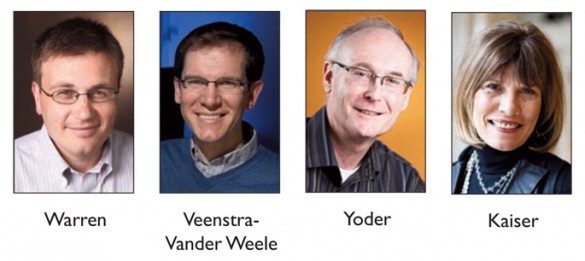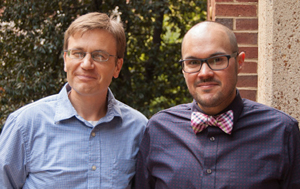
Researchers at Vanderbilt University have received grant awards from the National Institutes of Health as part of the Autism Centers of Excellence (ACE) research program. The NIH announced grant awards of $100 million over five years to 11 centers nationwide, three of which feature projects from Vanderbilt Kennedy Center investigators, to further studies on autism treatment and intervention.
“These are large-scale grants focused on dramatically accelerating our understanding of the best personalized treatment approaches for children with autism spectrum disorders,” said Zachary Warren, Ph.D., director of the Vanderbilt Kennedy Center’s Treatment and Research Institute for Autism Spectrum Disorders. “Having our institution involved in three distinct ACE Network projects means our Vanderbilt scientists will be powerfully partnering with families in our own backyard to answer the big questions of how best to treat children with autism.”
Site principal investigator Jeremy Veenstra-Vander Weele, M.D., division director of Child and Adolescent Psychiatry, together with Warren, co-principal investigator, are leading a study to test whether treatment with oxytocin nasal spray can improve social interaction and communication in children with autism.
“Oxytocin is a hormone all of our bodies produce. It is involved in a wide array of behaviors, including social engagement,” said Veenstra-Vander Weele. “The ideal is that we find that oxytocin pushes some children to engage more with the social world around them.”
This multisite study will enroll 300 children with autism between ages 3 and 17.
“Right now we have behavioral treatments available for young children with autism that can have dramatic effects, but they are expensive and hard for families to access,” said Veenstra-Vander Weele. “Later treatment seems to make less impact on social function, and we hope that medications like oxytocin may boost response to ongoing behavioral treatment.”
Site primary investigator Paul Yoder, Ph.D., professor of Special Education will conduct a clinical trial to determine the effects of treatment intensity and delivery style on the developmental progress of toddlers with autism.
Yoder and co-investigator Warren will compare two treatment styles in participants who are nonverbal and younger than 27 months and hope to match the teaching method and amount of teaching to the characteristics of a child with autism.
“Early intervention with autism is one of the big success stories,” said Yoder. “Not to minimize autism’s effect on families, but it’s not the long-term bad news that it used to be. Newer treatment models have shown to be very effective.”
Yoder says this research could have important implications for health care systems and families seeking expensive but needed autism treatment for their children.
Ann Kaiser, Ph.D., the Susan W. Gray Professor of Education and Human Development, leads the Nashville site for an ACE network that will compare two types of intensive, daily instruction for children ages 5-8 with autism who use only minimal verbal communication.
The study will enroll 200 children in four cities with a goal of having an effective treatment model for minimally verbal children.
“Many of these children are incredibly smart, and we don’t know why they don’t have language.” said Kaiser. “By the end of the five-year study, we hope to understand which treatment model works best for each type of child and develop an early-read system that indicates effectiveness of treatment and provides a strategy for adjusting the treatment to maximize its effectiveness.”
As recently as the 1970s, autism was believed to affect just one in 2,000 children, but data released in 2012 from the Centers for Disease Control and Prevention (CDC) estimates that one in 88 children has an autism spectrum disorder. Boys with autism outnumber girls 5-to-1, and current estimates are that one in 54 boys in the United States has autism.















